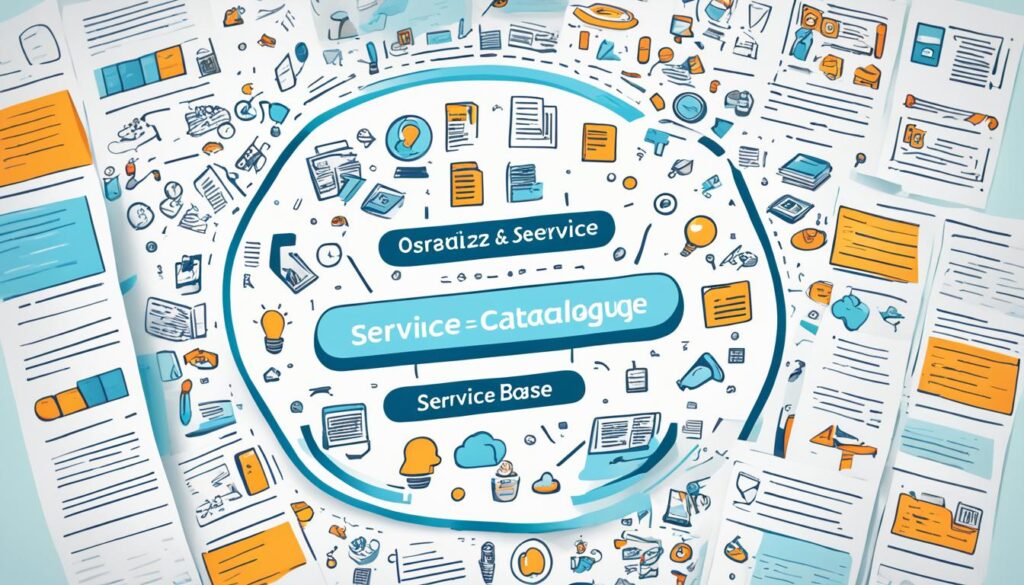When it comes to efficiently managing customer support in your small business, having a well-structured help desk setup is essential. By implementing the right strategies and utilizing the best tools, you can ensure seamless operations and deliver exceptional customer service.
Wondering how to get started? In this article, we’ll explore some of the essential help desk setup best practices that can help your small business thrive. From choosing the right help desk software to creating a service catalogue and offering a knowledge base, we’ll cover everything you need to know to establish a top-notch customer support system.
Let’s dive in and discover the key steps to optimize your help desk setup and provide the best possible support to your valued customers.
One of the first steps in setting up a successful help desk for your small business is choosing the right help desk software. You need a solution that is tailored to the needs of small businesses and offers features that can enhance your customer support processes.
The right help desk software should be affordable, easy to use, and cloud-based for seamless access from anywhere. It should also provide comprehensive reporting and analytics capabilities to help you make data-driven decisions for continuous improvement.
By investing in the best help desk software for small businesses, you can streamline your support operations and ensure that every customer query is efficiently handled, leading to improved customer satisfaction and loyalty.
Stay tuned for the next sections to learn more about the best practices in help desk setup, including creating a service catalogue, offering a knowledge base, and developing a culture of helping.
Choosing the Right Ticketing System for Your Business
When setting up a help desk for your small business, one of the first important decisions to make is choosing the right ticketing system. The ticketing system plays a vital role in organizing and managing all employee requests, ensuring that every ticket is tracked, addressed, and resolved efficiently. To optimize your help desk operations, it is crucial to select a ticketing system that is simple, reliable, and intuitive.
An effective ticketing system helps streamline and prioritize support tickets, allowing your team to handle customer issues effectively. Consider the following factors when choosing a ticketing system:
1. Ability to Track Tickets Across Multiple Channels
Choose a ticketing system that allows you to centralize support tickets from various channels such as email, phone calls, and social media. This ensures that all customer inquiries are captured in one place, preventing any requests from falling through the cracks.
2. Customization Options
Look for a ticketing system that can be customized to suit your small business needs. Customization options may include branding the ticketing interface with your company logo and colors, adding custom fields to collect specific information, and configuring workflows that align with your support processes.
3. Integration Capabilities with Other Business Tools
Consider integrating the ticketing system with other tools your business uses, such as customer relationship management (CRM) software, project management tools, or communication platforms. This integration allows for seamless data sharing, reducing manual work and improving overall efficiency.
By carefully considering these factors, you can choose a ticketing system that aligns with your small business requirements and enhances your help desk operations.
Remember, a well-implemented ticketing system is the backbone of efficient support ticket management, enabling your team to provide excellent customer service and ensure no ticket goes unanswered.

Comparison of Top Ticketing Systems for Small Businesses
| Features | Ticketing Software A | Ticketing Software B | Ticketing Software C |
|---|---|---|---|
| Multiple Channel Support | ✔️ | ✔️ | ✔️ |
| Customization Options | ✔️ | ✔️ | ✔️ |
| Integration Capabilities | ✔️ | ✔️ | ✔️ |
| Reporting and Analytics | ✔️ | ✔️ | ✔️ |
| Mobile App Support | ✔️ | ✔️ | ✔️ |
Table: A comparison of top ticketing systems based on key features for small businesses:
“Choosing the right ticketing system is crucial for small businesses to effectively manage support tickets. By considering factors such as ticket tracking capabilities, customization options, and integration capabilities, businesses can find a system that best fits their requirements.”
Creating a Service Catalogue and Offering a Knowledge Base
To provide efficient customer support, it’s essential to create a service catalogue that outlines the different types of services offered by your help desk. The service catalogue acts as a comprehensive guide for both your help desk team and your customers, ensuring that everyone is on the same page regarding the available services.
The service catalogue should include important information such as:
- Service categories: Categorize your services based on their nature, such as technical support, account management, or product inquiries.
- Approval structures: Specify the process and criteria for approval of service requests, ensuring efficient and streamlined workflows.
- Costs: Clearly state any costs or fees associated with specific services to manage customer expectations.
- Tracking processes: Implement a system to track the progress of service requests, allowing both your team and customers to stay updated.
- Delivery expectations: Set clear expectations for response times and resolution times, ensuring timely and satisfactory service delivery.
Additionally, offering a knowledge base or self-service portal can enhance customer support efficiency. A knowledge base is a centralized repository of information that empowers your customers to find answers to common issues on their own. By providing easy access to FAQs, guides, tutorials, and contact forms, you encourage self-help and reduce the strain on your help desk team.
A self-service portal allows customers to access the knowledge base and submit support requests without the need for direct interaction with the help desk team. This empowers them to troubleshoot and resolve simple issues independently, freeing up your team’s time to focus on more complex problems.
Remember, the key to creating an effective service catalogue and knowledge base is organization and accessibility. Ensure that the information is easily navigable and searchable, and regularly update the content to reflect the latest changes and developments.

| Benefits of Creating a Service Catalogue | Benefits of Offering a Knowledge Base |
|---|---|
| Improved clarity and transparency | Reduced customer support workload |
| Streamlined service request processes | Enhanced customer self-help capabilities |
| Better resource allocation and assignment | Increased customer satisfaction |
| Effective management of service costs | 24/7 availability of support resources |
Conclusion
Setting up an effective and efficient help desk is crucial for small businesses to provide excellent customer support. By leveraging the right help desk software for small businesses, such as affordable and cloud-based options, businesses can streamline their customer support processes and enhance efficiency.
Key practices such as choosing the best help desk software and implementing a ticketing system, creating a service catalogue, and offering a knowledge base can help businesses effectively track and manage customer inquiries. Additionally, developing a culture of helping and customizing the work environment to meet specific needs can further enhance the customer support experience.
Collecting feedback and using customer support software analytics enables data-driven decision-making, leading to constant improvements in the support system. With the right setup, small businesses can deliver exceptional customer experiences, foster customer loyalty, and drive overall business success.
FAQ
What factors should I consider when choosing a ticketing system for my small business?
When choosing a ticketing system, consider factors such as simplicity, reliability, and intuitiveness. Also look for features like the ability to track tickets across multiple channels, customization options, and integration capabilities with other business tools.
How can I create a service catalogue for my help desk?
To create a service catalogue, outline the different types of services offered by your help desk. Include information such as service categories, approval structures, costs, tracking processes, and delivery expectations. This will help streamline your support processes and provide clarity for both your team and customers.
Why is offering a knowledge base important for my help desk?
Offering a knowledge base or self-service portal can empower your customers to find answers to common issues on their own. This reduces the strain on your help desk team and allows customers to get the support they need quickly and conveniently.
